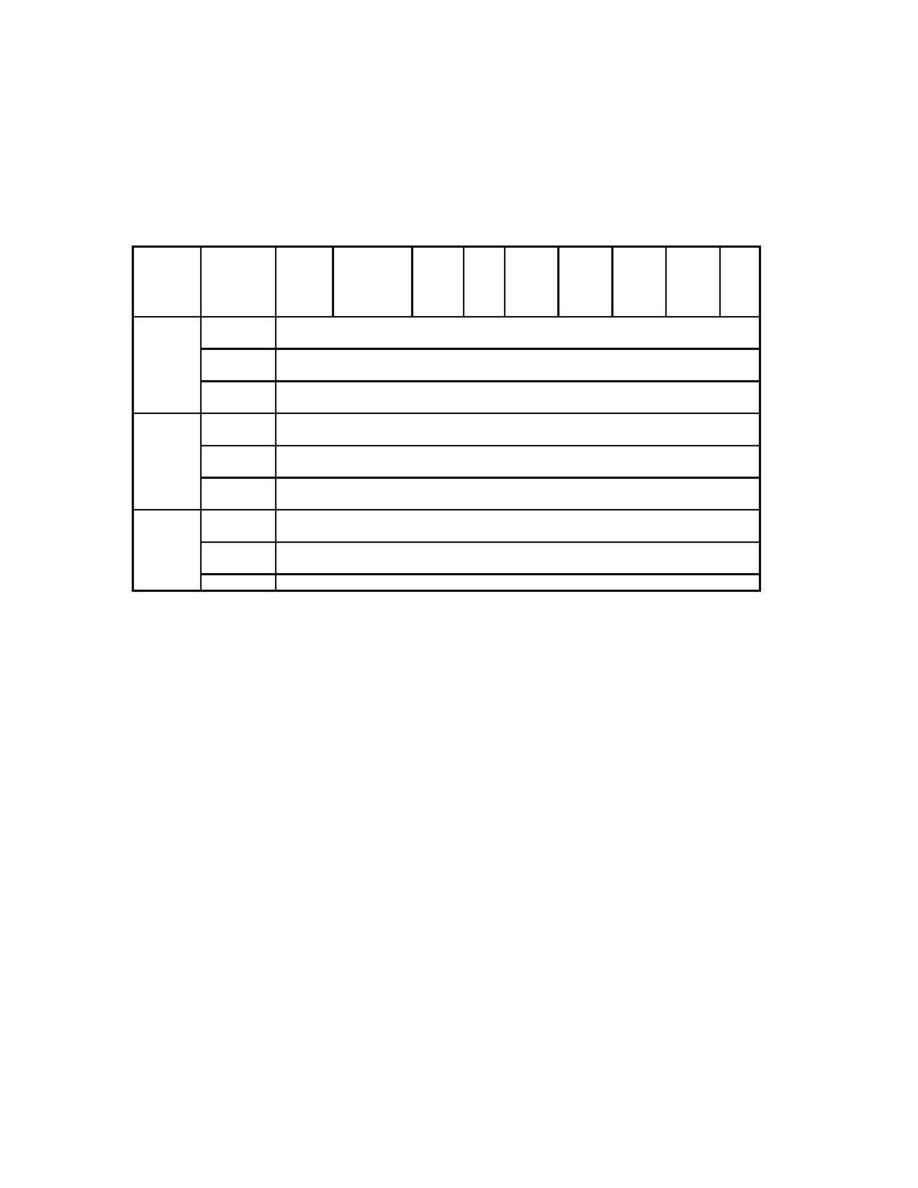
1.21g/m
2
.mm, respectively, which is 5.8, 6.4 and 3.1 times that of vegetation in wasteland, respec-
tively (Tab.1). The above analyses show that water consumption of seabuckthorn is more economical
and its WUE is higher than that of vegetation in wasteland, due to the physiological ecology and
morphological anatomy of seabuckthorn. According to Li (1990), the water amount (free and bound) in
seabuckthorn accounts for 25.4% and 41.5% of the total, respectively, and the ratio of free water to
bound water is 1.62.
Tab. 1. Water consumption and WUE of seabuckthorn woodlands
Experi-
mental
areas
Age of
forest and
year of
closure
Type of
land
Water
storage in
5m soil layer
(mm)
Annual
rainfall
(mm)
NAPP
(g/m
2
)
Total
water
consum-
ption
(mm)
Water
transpir-
ation
(mm)
Coeff. of
water
consum-
ption
Coeff. of
water
transpir-
ation
WUE
(g per
m
2.
.mm
)
5 (1981)
H.R
1
N.V
2
570
570
329
280
80
225
223
160
52
804
2788
571
650
1.24
0.36
9 (1985)
H.R
469
544
557
452
353
811
634
1.23
Air-
seeding
wood-
lands in
Wuqi
13 (1989)
H.R
N.V
340
364
431
645
130
559
607
381
46
867
4669
591
354
1.15
0.21
5 (1988)
H.R
605
412
543
467
262
859
482
1.16
6 (1989)
H.R
561
312
521
430
335
825
642
1.21
Woodland
in Guyuan
7 (1990)
H.R
N.V
567
674
378
842
80
378
340
562
56
449
4261
667
702
2.23
0.23
4 (1995)
H.R
460
321
400
320
280
800
700
1.25
5 (1996)
H.R
510
568
560
480
340
857
607
1.16
Woodland
in Ansai
4 (1995)
N.V
600
321
198
503
68
2540
343
0.39
Note:
1
H.R: seabuckthorn woodlands,
2
N.V: vegetation in wasteland
Daily mean water potential of seabuckthorn is 1.44x10
6
Pa, which is lower than that of mountain
peach (Prunus ssp.). Seabuckthorn can shut its stoma to save water under conditions of water
shortage, which is an important characteristic for improving WUE. Seabuckthorn leaves have ad-
vanced epidermal hair, thicker cuticle and advanced palisade tissue cells, providing strong adaptation
to atmospheric drought. Because of advanced perioderm thin-walled tissue and larger intervals
among cells, the seabuckthorn root has a strong capability to conserve water (Cong et al. 1990).
Water content in the roots, stems and leaves of seabuckthorn are 65%-80%, 35%-50% and 60%-78%
respectively.
3.4 Water ecological condition of seabuckthorn woodland
Tab. 2 shows the utilization of soil water in seabuckthorn woodland and wasteland. According to
the utilization by seabuckthorn of soil water, the soil can be classified into four layers: roots weak use
layer, roots use layer, soil water regulated and supplied layer, soil water faintly regulated layer. The
depth of 7-year old seabuckthorn root systems absorbing water exceeds 5m, which is generally equal
to the length of root spread. Soil moisture in the depth of seabuckthorn root spread is obviously lower
than that of other soil layers, because the root system absorbs water strongly. The mean soil water
content of 5m depth soil layer in seabuckthorn woodland is 7.5% (the wilting water content is 6.1%),
which is lower than that in mountain peach and locust woodland. Along with the increase of seabuck-
thorn age, deficit of soil moisture in the woodland becomes serious, however, the soil moisture in the
1-1.5 m depth recovers well, and the soil water content may approach or surpass that in natural
grassland of barren hill. The reason is that water holding capability and soil water permeability in the
woodland is gradually increased with the age of the woodland.
